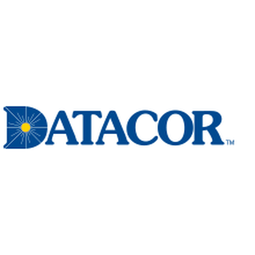下载PDF
Datacor Helps Whitaker Oil Increase Profitability
技术
- 功能应用 - 企业资源规划系统 (ERP)
适用行业
- 化学品
适用功能
- 离散制造
- 销售与市场营销
用例
- 库存管理
- 补货预测
服务
- 软件设计与工程服务
挑战
Whitaker Oil operates a complex enterprise with multiple companies and multiple facilities. The company was in need of a business software solution that could help them manage and measure profitability at the transaction level. The solution needed to be specifically designed for the chemical industry, capable of handling complex batching and blending, inventory management, purchasing, safety, price management, order entry, invoicing, and financial statements.
关于客户
Whitaker Oil is a company that distributes solvents, chemicals, and petroleum products from facilities in the southeastern United States. In addition to distribution, the company also provides blending, terminaling, and custom packaging services. The company operates a complex enterprise with multiple companies and facilities, requiring a robust business software solution to manage and measure profitability at the transaction level.
解决方案
After researching many software solutions, Whitaker Oil selected Chempax VB from Datacor, Inc. The company recognized Datacor as a leader in the chemical distribution software business. Chempax VB software captures every transaction Whitaker Oil does, mirroring the entire enterprise. The software allows Whitaker Oil to automate the distribution of reports to key management and sales personnel, providing them with up-to-date information on customer order and invoicing activity. Chempax also manages global price changes, a crucial feature given the volatile pricing in the chemical industry.
运营影响
相关案例.

Case Study
Honeywell - Tata Chemicals Improves Data Accessibility with OneWireless
Tata was facing data accessibility challenges in the cement plant control room tapping signals from remote process control areas and other distant locations, including the gas scrubber. Tata needed a wireless solution to extend its control network securely to remote locations that would also provide seamless communication with existing control applications.

Case Study
Advanced Elastomer Systems Upgrades Production
In order to maintain its share of the international market for thermoplastic elastomers AES recently expanded its Florida plant by adding a new production line. While the existing lines were operating satisfactorily using a PROVOX distributed control system with traditional analog I/O, AES wanted advanced technology on the new line for greater economy, efficiency, and reliability. AES officials were anxious to get this line into production to meet incoming orders, but two hurricanes slowed construction.
Case Study
Wireless GPS Tracking & Security Monitoring
Enhancing the security of hazardous freight and ensuring compliance with Homeland Security’s Transportation Security Administration mandate that all trains carrying chemicals capable of creating a toxic inhalation condition are equipped with on-board safety monitoring systems.

Case Study
Field Device Asset Management For Chemical Company in China
Chinese chemical subsidiary of multinational corporation serves customers throughout the world. Sales offices and research and technology centers are strategically located to provide rapid response to customer requests. Just two workers were assigned to maintain thousands of intelligent instruments in three production units, so they could do little more than react to device issues as they appeared. This costly maintenance method inevitably led to unexpected downtime when a critical instrument failed. Plant management recognized the need to change from reactive to predictive maintenance for all assets, including instruments and control valves, but help was needed in implementing such a technology-based initiative.

Case Study
Industrial Workforce Mobility for Improved Safety & Operations
Huntsman Corporation, a global manufacturer and marketer of differentiated chemicals, undertook an aggressive program to eliminate injuries, product defects, and environmental releases at their Port Neches facility. Termed “Project Zero”, this program required a completely mobile solution to empower operations and maintenance personnel to capture defects, track work progress and make process and safety related decisions in real-time.






